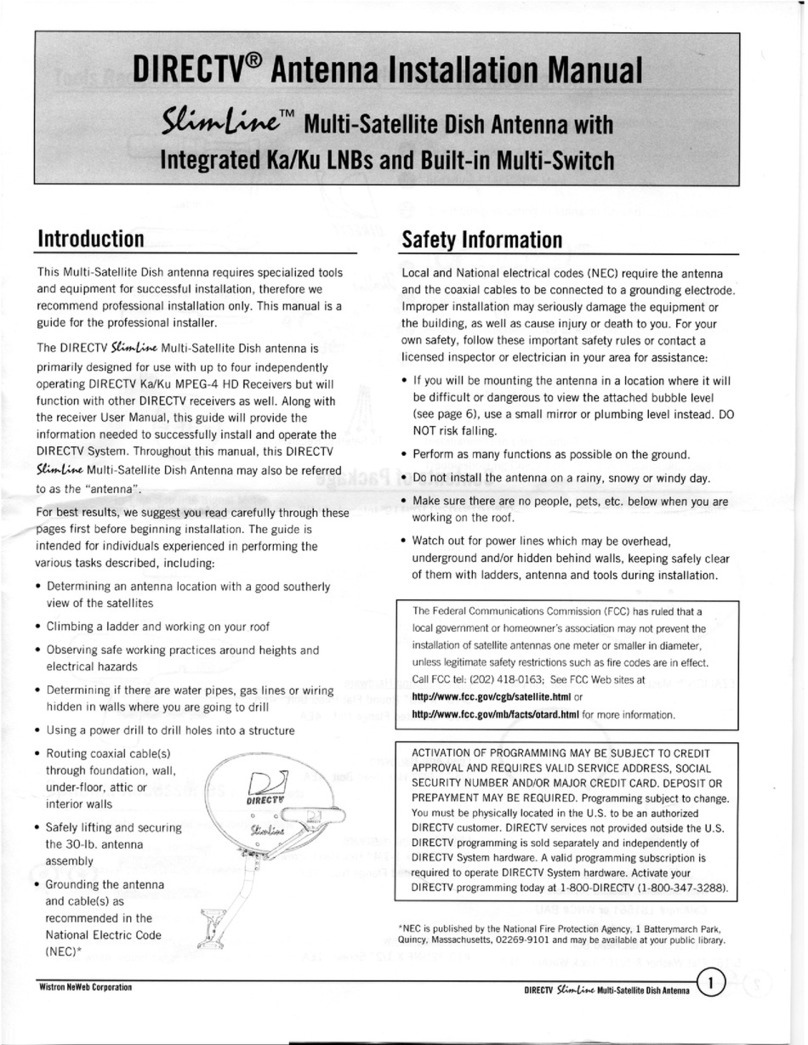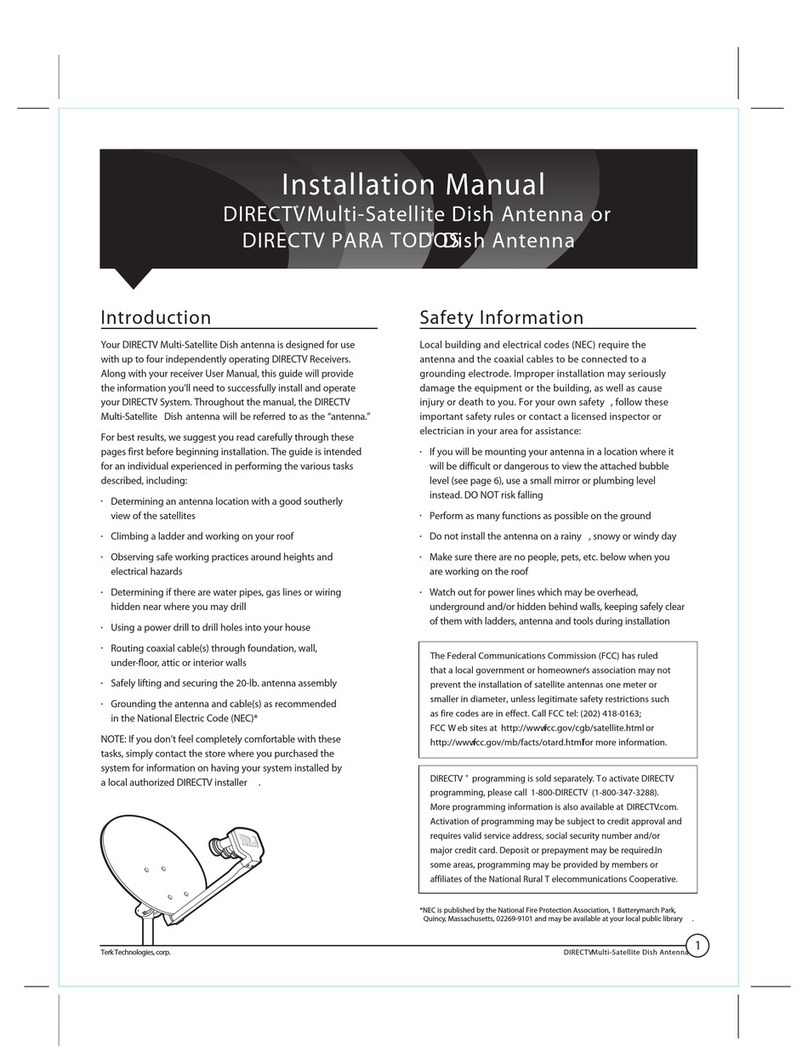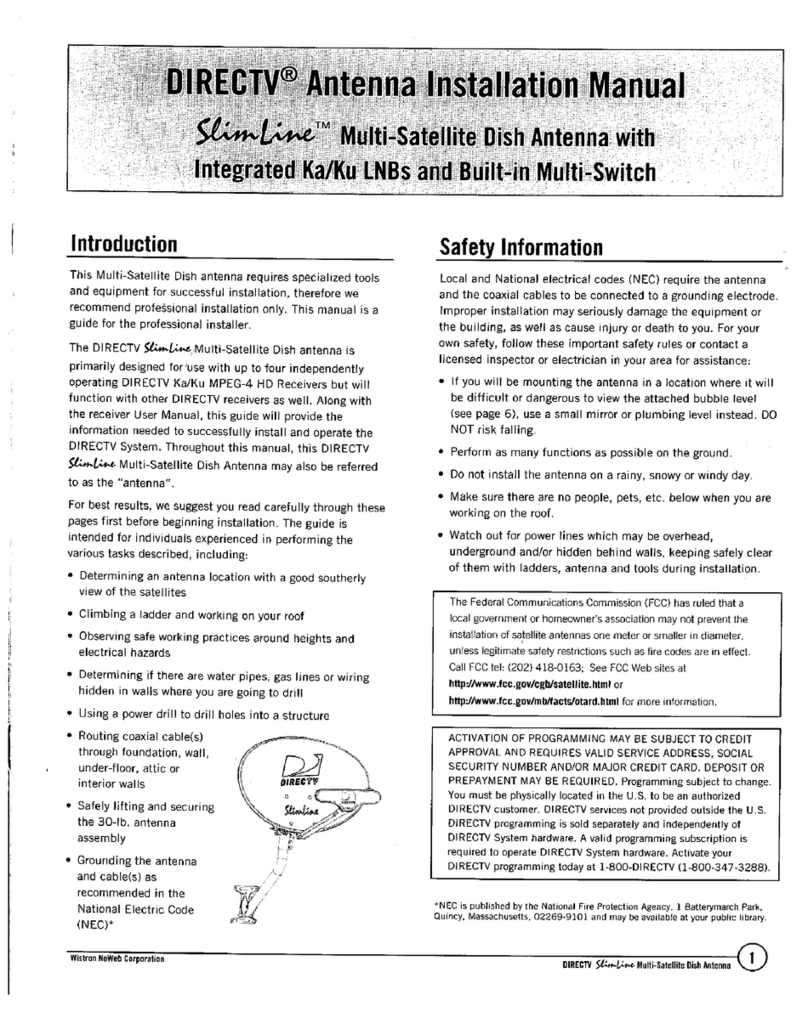DirecTV A3-KaKu HD Installation guide
Other DirecTV Antenna manuals

DirecTV
DirecTV Multi-Satellite User manual

DirecTV
DirecTV SlimLine User manual

DirecTV
DirecTV DSA20MA User manual

DirecTV
DirecTV TV SAT 2.5A User manual

DirecTV
DirecTV SlimLine User manual

DirecTV
DirecTV 95 W User manual

DirecTV
DirecTV TRKS26 User manual

DirecTV
DirecTV SlimLine User manual

DirecTV
DirecTV SlimLine User manual

DirecTV
DirecTV Multi-Satellite User manual
Popular Antenna manuals by other brands

DAVIS
DAVIS Windex AV 3160 installation instructions

Belden
Belden Hirschmann BAT-ANT-N-14G-IP23 Mounting instruction

Vtronix
Vtronix YHK Fitting instructions

KVH Industries
KVH Industries TracVision 6 Technical manual

Leica Geosystems
Leica Geosystems GS10 user manual

Sirio Antenne
Sirio Antenne Gain-Master manual

Feig Electronic
Feig Electronic ID ISC.ANTH200/200 Series manual

TERK Technologies
TERK Technologies TV44 owner's manual

TERK Technologies
TERK Technologies SIR3 owner's manual

Directive Systems & Engineering
Directive Systems & Engineering DSE2324LYRMK quick start guide

HP
HP J8999A instructions

MobilSat
MobilSat MSP-S Mounting instructions
















